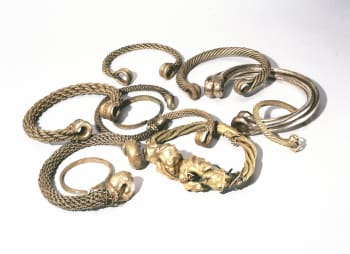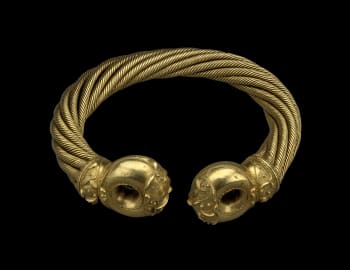The Snettisham hoards
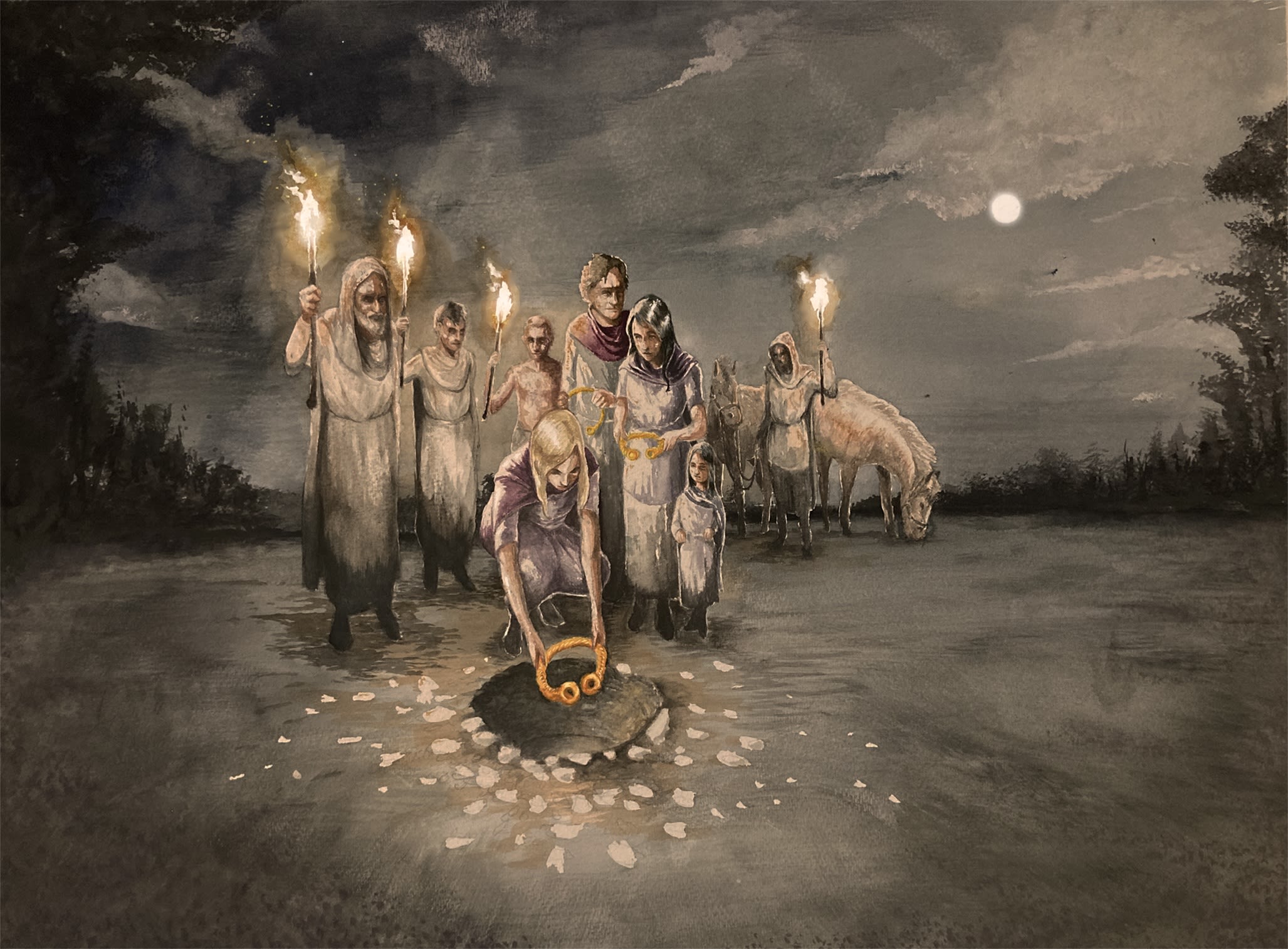
Ken Hill, near the village of Snettisham in northwest Norfolk, is a special place. Today, it is the site of a re-wilding project called Wild Ken Hill. Two thousand years ago, this promontory on the Norfolk coast was the location of the deposition of some of the most spectacular ancient metalwork from Britain. The objects lay undisturbed for millennia until, over the last 70 years, a series of remarkable chance and archaeological discoveries were made. We now have evidence for at least 14 separate hoards buried in the late Iron Age and early Roman periods, with a focus of activity around 60 BCE.
The ‘gold field’ in winter 1990. Image © The Trustees of the British Museum
The ‘gold field’ in winter 1990. Image © The Trustees of the British Museum
The location of the site and Ken Hill. Image © The Trustees of the British Museum
The location of the site and Ken Hill. Image © The Trustees of the British Museum
Despite its importance, the site had never been fully published. A decade-long project involving a collaboration between MAA curator Jody Joy and staff at the British Museum set out to address this, undertaking scientific investigation of the objects now held at the British Museum and Norwich Castle Museum, as well as re-examining excavation and survey evidence. This is all presented in a new book, co-edited by Jody and British Museum curator Julia Farley, which is fully open access and can be downloaded free of charge.
What follows is a brief account of some of the headline discoveries.
Some of the most impressive objects from Snettisham are neck-rings, known as torcs, many made from alloys of gold and silver. Torcs were worn by people across Europe throughout the Iron Age, but nowhere else have so many been discovered in one place. There are over 60 complete or near-complete examples from the site, and hundreds more are represented by fragments. Scientific analysis by British Museum scientists, including Caroline Cartwright, Nigel Meeks, Aude Mongiatti and Dan O’Flynn, has revealed the extraordinary skill of the ancient metalworkers. This includes the discovery of mercury gilding, the earliest known occurrence of this technique in Britain. Examining the broken ends of wires using an electron microscope, scientists also noticed that some were richer in gold and silver at the surface and more copper rich at the core. This is evidence for a process known as surface enrichment, also very rare for the time.
Who wore these torcs? Were they symbols of power and wealth for high-status individuals or, alternatively, communal possessions associated with roles, rites or offices? It is impossible now to know for certain, but the range of different sizes suggests they were worn by a large cross-section of society, including young people as well as adult men and women. Scientific investigation showed that many torcs were heavily worn and repaired, perhaps suggesting some were owned by more than one individual, and possibly passed down the generations as heirlooms.
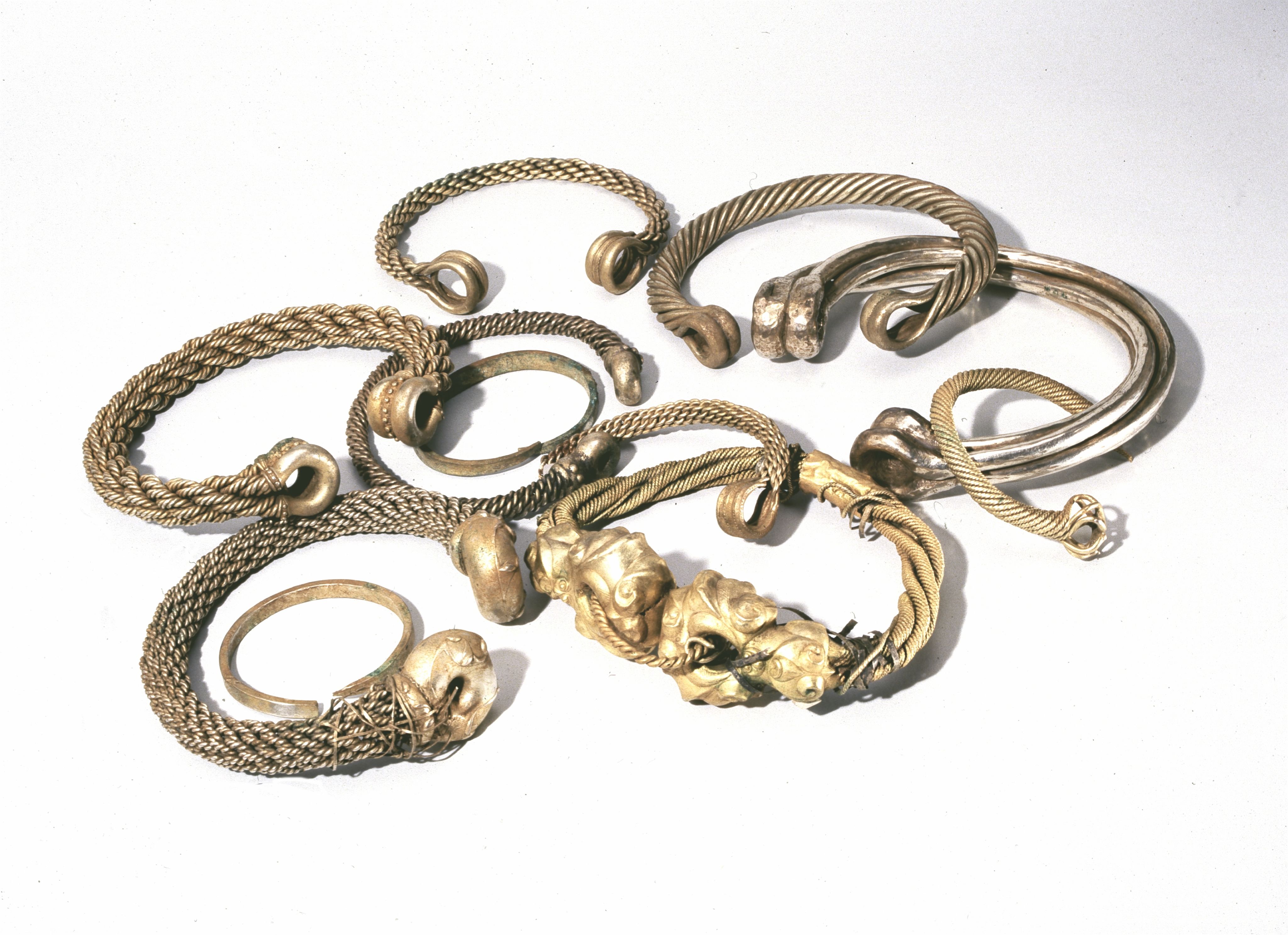
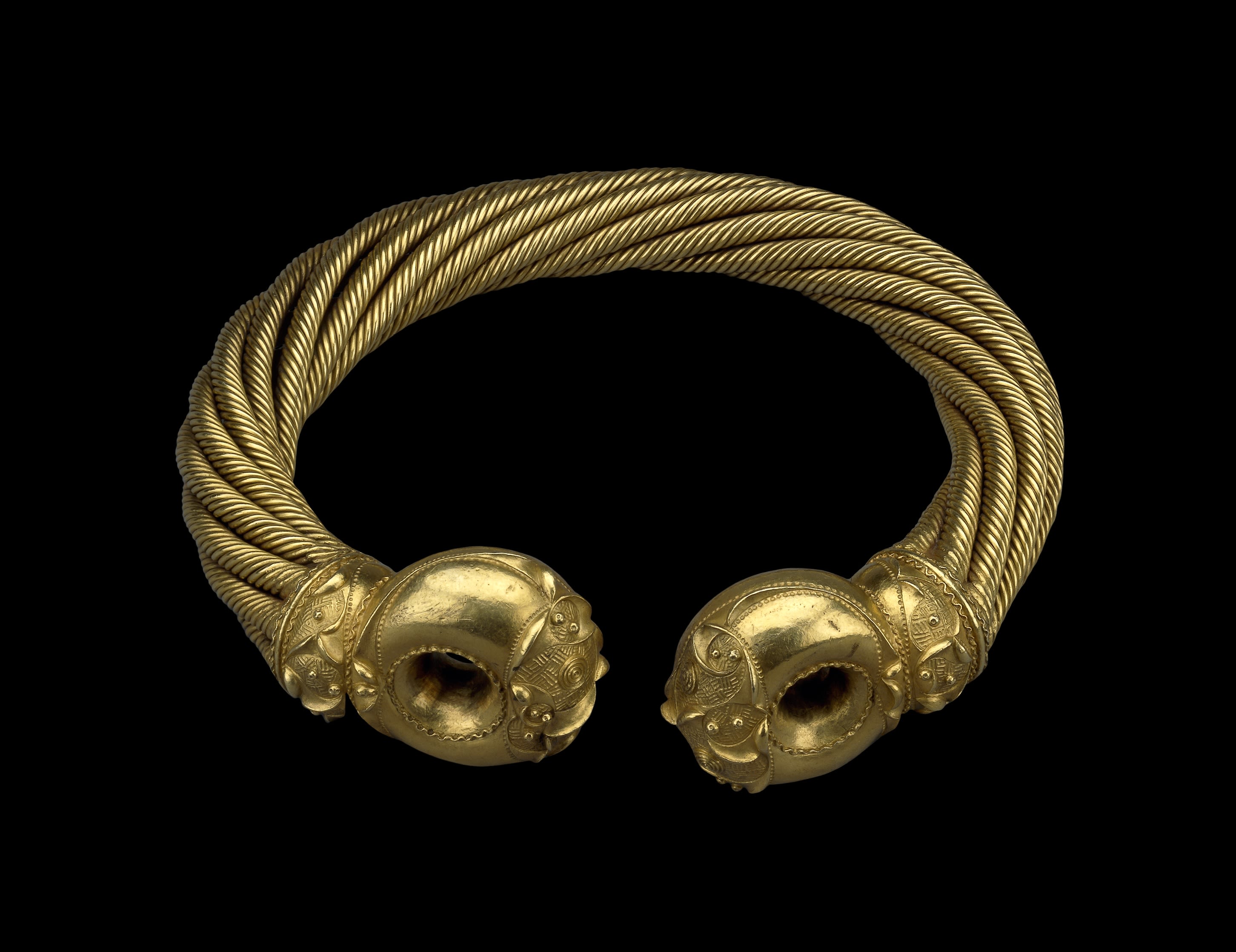
Buffer terminal gold torc decorated with Celtic Art. British Museum, 1991,0407.31. Image © The Trustees of the British Museum
Buffer terminal gold torc decorated with Celtic Art. British Museum, 1991,0407.31. Image © The Trustees of the British Museum
The lower pit of Hoard L, with the torcs in situ in the ground. Image © The Trustees of the British Museum
The lower pit of Hoard L, with the torcs in situ in the ground. Image © The Trustees of the British Museum
The helmet which once held Hoard F was reconstructed from fragments by skilled conservators. Image © The Trustees of the British Museum
The helmet which once held Hoard F was reconstructed from fragments by skilled conservators. Image © The Trustees of the British Museum
One of the most surprising discoveries the team made occurred in a conservation laboratory, decades after the objects were excavated. After many hours piecing together tiny fragments of copper alloy, like an ancient jigsaw puzzle, conservator Fleur Shearman showed they were originally part of an incredibly rare ancient helmet.
A final question addressed in the book was why so many wonderful objects were buried at Snettisham. Even today, Ken Hill is a conspicuous place in the landscape. It is a high place with spectacular views in an otherwise flat landscape, and as such it may have been an ideal place for people to gather and deposit hoards. But what did the hoards do? What motivated people to offer up valuable possessions, many of which had long histories? We know because of the presence of a small number of coins in some of the hoards that most were probably buried around 60 BCE. This coincides with the first occurrence of locally-made coins in the region. It is speculated in the book that the hoards were part of a social transformation: taking these older symbols of value and power out of circulation at a time when torcs were being replaced by coins as a means of demonstrating wealth, status and connections.
The books are available open access on the British Museum website.

Published 19 December 2024
The text in this work is licensed under a Creative Commons Attribution 4.0 International License




